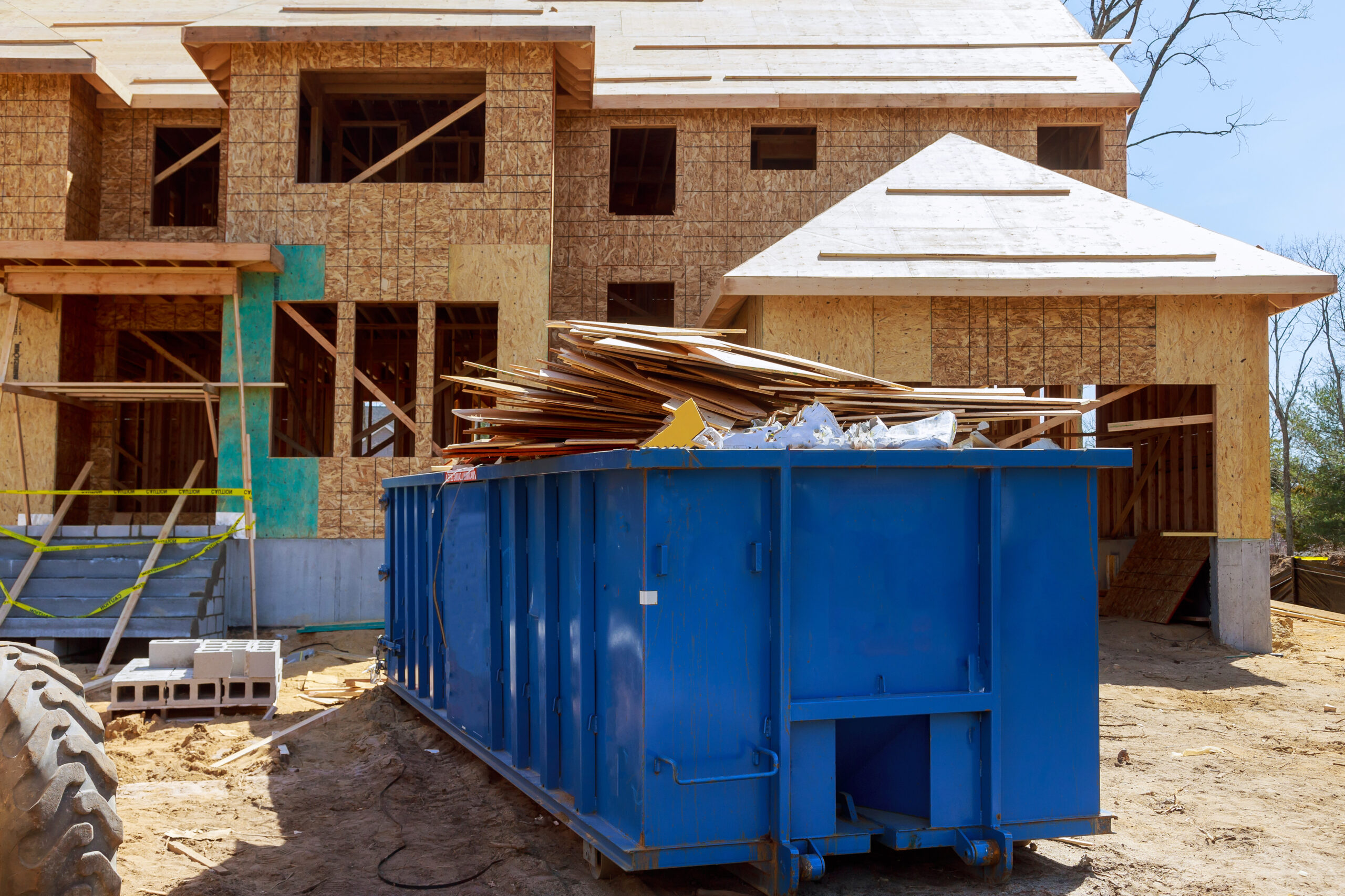When it comes to managing construction waste, choosing the right dumpster can feel overwhelming. You might be asking yourself: “How do I know what size I need?” or “What happens if I end up with too much trash?” The good news is you’re not alone in this predicament. Many find themselves standing at the threshold of a daunting project, unsure of how to handle the debris that comes with it. Whether you’re renovating your kitchen or tackling a large-scale commercial build, understanding your options can simplify the process significantly. This guide will walk you through everything you need to know, from different dumpster sizes and types to important regulations and rental tips, ensuring that your waste management strategy aligns perfectly with your project’s needs.
When renting a construction dumpster, it’s essential to choose the appropriate size based on the volume of debris you’ll be disposing of, as well as understanding local regulations regarding placement and disposal. Additionally, most services offer flexible rental periods and can provide guidance on the types of materials that can be discarded in the dumpster.
Different Types of Construction Dumpsters
When embarking on a construction project, selecting the right dumpster type is crucial for effective waste management. Among the most common choices are roll-off and front-load dumpsters, each tailored for different circumstances and types of debris.
Roll-Off Dumpsters
Roll-off dumpsters are often the go-to option for many construction sites due to their high capacity and convenience. With distinctive wheels that allow trucks to “roll off” these containers onto the ground, they can handle a significant volume of waste. You’ll find them used in large residential renovations, commercial builds, and extensive landscape projects.
The sizes available range from 10 cubic yards—perfect for small remodeling jobs—to 40 cubic yards, which can accommodate extensive renovations or demolition work.
Every construction site has its specific needs, but having a roll-off dumpster can reduce delays by allowing easy access to discard debris without hindering your workflow.
It’s worth noting that approximately 4.4 pounds of waste per person are generated daily in the United States (source: EPA). Utilizing a roll-off dumpster not only addresses this waste effectively but also ensures that your site remains safe and compliant with regulations.
Front Load Dumpsters
In contrast, front-load dumpsters cater primarily to smaller projects or ongoing waste management needs. These are typically seen in commercial properties where frequent waste disposal is necessary, such as restaurants or retail spaces. Unlike roll-off dumpsters, front-load options have a lower profile and utilize a lift mechanism to empty contents into a specialized truck. Their moderate size makes them suitable for weekly pickups rather than large single loads.
Many businesses require regular collection services due to constant waste generation, and that’s where front-load dumpsters come into play. They offer flexibility for those who may not need extensive storage but still want to maintain cleanliness and hygiene in their business environment.
Each type of dumpster has its benefits tailored to specific project needs, which means selecting the right size aids efficiency while helping prevent additional costs associated with improper waste disposal or excess trips to the landfill. As you assess your options, consider the factors that will influence your decision regarding a rental service that best fits your project’s requirements.
Choosing the Right Dumpster for Your Project
Selecting the appropriate dumpster requires careful consideration of various factors that directly relate to the nature of your project. First and foremost, assess your construction scope thoroughly. You might think it’s just about choosing the biggest container available, but there’s more at play. The size of dumpster you choose can streamline the waste removal process, making it a key factor in maintaining productivity on-site.
Assess the Scale of Your Project
To gauge what you need, evaluate the scale of your construction project by following these steps:
- Determine Waste Type and Quantity: The kind of waste produced can vary significantly. For example, a home renovation will typically generate heavier debris like old tiles and cabinets, while a new construction site may yield larger amounts of lumber or concrete. Understanding this will help you decide not only on size but also on specific disposal requirements—such as whether you’ll need containers specifically designed for hazardous materials if such items are involved.
- Consider Project Duration: The time frame for your project matters as well. For shorter jobs—like minor renovations—you might find that a compact 10 to 20-yard dumpster could suffice, limiting costs and space use. Conversely, larger projects that unfold over weeks or months may require bigger 30 or even 40-yard units to accommodate gradual waste buildup without interrupting workflow.
- Check Local Regulations: Before finalizing your choice, investigate local waste disposal regulations or restrictions. Some areas have specific guidelines about the type of waste that can go into dumpsters as well as where they can be placed on-site. Outdated or illegal disposal methods can result in hefty fines, making this step critical.
Do you anticipate additional waste during the project? If so, consider opting for a larger dumpster to avoid frequent replacements and potential delays while waiting for pickups.
By methodically evaluating factors such as the type of waste generated, duration of your project, and local regulations, you can make an informed decision that maximizes efficiency while keeping costs down. It’s always better to overestimate your needs slightly than to underestimate and find yourself caught in a logistical bind later on.
With these considerations in mind, you’ll be better prepared to choose a rental option that suits your project’s unique demands and keeps things running smoothly. Next, we’ll look at how to secure that perfect trash bin for your upcoming endeavors.
Renting a Construction Dumpster
When you’re gearing up for a construction or renovation project, tackling waste disposal logistics can seem daunting. However, renting a dumpster is a straightforward solution that simplifies trash management while keeping your workspace safe and organized. First things first, doing your homework is crucial. Research local providers carefully; while there are plenty of options out there, quality varies widely. Look for companies with solid reputations; reading customer reviews can give you valuable insights about their service.
After shortlisting potential companies, it’s time to elevate your game further and consider pricing.
Step-by-Step Guide to Renting
The next step involves requesting quotes from several providers. This helps you understand average rental costs and allows you to compare services for competitive rates. Just as you wouldn’t buy the first tool at the store without checking around, now is the time to leverage your research for value. Be sure to ask questions that arise—service expectations, additional fees, or payment methods—clarity at this stage can prevent headaches later on.
Once you’ve secured favorable quotes, aligning the delivery schedule will keep your project on track.
Scheduling delivery is a critical part of the process. Select a date that fits smoothly into your project timeline—planning ahead is essential! Ensuring the dumpster arrives just as you start work maximizes efficiency and minimizes downtime. To avoid surprises, double-check access routes and space prior to delivery. Confirm that your chosen spot allows enough room for the dumpster and permits safe maneuvering—nobody wants to deal with moving obstacles on a busy workday.
Finalizing the placement of the dumpster is pivotal for convenience during your project.
In preparing for the dumpster’s arrival, it’s essential to designate an appropriate place for it. A safe location that provides easy access facilitates efficient dumping throughout your project. Consider placing it near your primary work area while remaining compliant with any regulations regarding street use or driveway obstructions. Being proactive about this step avoids unnecessary delays and ensures seamless waste disposal.
“Renting early and scheduling ahead saved us significant time and hassle,” noted a project manager.
With these steps clearly laid out, you’re better equipped to navigate the rental process smoothly and make informed decisions suitable for your project’s needs. Understanding each phase ensures that you’re maximizing efficiency while avoiding common pitfalls—and timely waste management keeps everything flowing smoothly.
As we shift our focus, it’s essential to explore how waste is handled responsibly after disposal.
Disposal and Recycling Policies
Proper disposal and recycling of construction waste are essential for compliance with environmental regulations but also for promoting sustainability. By understanding how to manage your construction debris effectively, you not only stay within legal bounds but also contribute to a healthier planet. When you’re sifting through piles of leftover materials like wood scraps, broken concrete, or roofing tiles, it’s imperative to adopt clear strategies for separation and disposal.
Recycling Practices
One beneficial practice is to divide waste into recyclable and non-recyclable categories. Materials like metals, cardboard, and certain plastics are often recyclable. For instance, metals can be repurposed, reducing the need for mining new resources, which has significant environmental impacts. Cardboard can easily be recycled, helping to save trees and decrease landfill use. However, it’s important to clean these materials before disposal because contamination (like leftover grease on pizza boxes) can make them unrecyclable.
“Material segregation not only allows for effective recycling but also makes the entire waste management process smoother.”
Beyond recycling, there’s another crucial aspect: adhering to regulatory compliance.
Compliance with Regulations
Always check local ordinances regarding construction waste to avoid fines. This means having a clear understanding of what can and cannot be disposed of through normal channels and knowing the specific requirements in your area. Each municipality may have nuances in their regulations regarding hazardous materials or large debris disposal, so being informed is vital. Companies like us at Tiger Sanitation follow strict guidelines, ensuring compliance while promoting responsible waste handling practices.
Additionally, ensuring proper documentation of waste disposal methods can serve as evidence of regulatory compliance. This could come in handy when local authorities inquire about your waste management practices or during future project planning. Keeping thorough records helps demonstrate your commitment to environmental responsibility.
As you navigate these practices, it’s important to consider how various factors influence your overall expenses in the context of waste management services.
Pricing and Cost Considerations
The cost of renting a construction dumpster can often feel overwhelming, but breaking it down into manageable pieces helps clarify the expenses involved. It’s essential to remember that the price tag is not just a simple fee; rather, it’s shaped by several key components that reflect the specifics of your project and its requirements. Understanding these elements equips you to make informed decisions without unexpected financial surprises.
Key Factors Influencing Cost
| Factor | Description |
|---|---|
| Size | Larger dumpsters carry a higher rental price but accommodate more waste—this means fewer trips and better efficiency on larger projects. |
| Duration | The length of time you need the dumpster plays a significant role in costs. A short-term rental may seem cheaper at first glance, but longer rentals typically offer lower daily rates overall. |
| Location | Your location matters! Being farther from landfill or recycling facilities may increase transport costs. Local regulations or permits might also affect pricing. |
| Weight | Each rental comes with weight limits that, if exceeded, incur additional charges. Understanding these limits is key to managing costs effectively. |
By optimizing your use of the dumpster—such as planning ahead for the types and expected weight of materials—you can manage costs effectively. For example, if you anticipate a large amount of concrete that exceeds standard weight limits, opting for a larger dumpster initially may save you from costly extra fees later on.
Additionally, consider bundling services whenever possible. Some companies offer discounts for arranging multiple waste management solutions simultaneously—a strategy that streamlines processes while potentially lowering overall costs.
Having clarity on these pricing considerations will help you select the right size dumpster for your project while maximizing your budget and ensuring compliance with local regulations. Now, let’s explore what options exist beyond traditional dumpster rentals.
Alternatives to Construction Dumpsters
One viable alternative is the use of Bagsters, which are large disposable bags designed for residential waste collection. Imagine this convenience: you simply fill these bags with debris from minor renovations or yard work, and once you’re finished, you schedule a pickup with a specialized truck. This option is particularly attractive for smaller projects, as it allows you to avoid the bulkiness and expense associated with traditional dumpsters. Bagsters typically offer an economical solution that caters to short-term needs without compromising on effectiveness.
In fact, many homeowners find that just one or two Bagsters can accommodate the waste from minor home improvement tasks, significantly simplifying their cleanup efforts.
But what if you have a bit more clutter than a Bagster can handle?
Another alternative is utilizing professional junk removal services. These companies specialize in collecting various types of debris, from old appliances to broken furniture. Their speed and convenience make them appealing; you don’t have to worry about loading up a dumpster or bag yourself. Instead, the crew comes in, takes care of all the heavy lifting, and ensures that your space is neatly cleared out. However, while they excel at handling smaller loads efficiently, there can be limitations when it comes to larger renovation projects where volume plays a significant role. The cost may also add up quickly compared to renting a dumpster for extensive jobs.
Evaluating Your Options
Ultimately, evaluating all waste management options ensures you select the most efficient and cost-effective method for your project. Consider factors like project size, duration, and budget when deciding between a dumpster, Bagster, or professional service. Some projects may require a mix of these methods; for instance, using a dumpster for substantial debris removal alongside professional services for heavier items like appliances makes sense in many remodeling scenarios.
This mindful approach to waste disposal not only ensures your project runs smoothly but also supports responsible waste management practices in your community. By understanding these options deeply, you empower yourself to make informed decisions that best fit your individual circumstances.
In navigating these choices between construction dumpsters, Bagsters, and junk removal services, you’re better equipped to manage your project’s waste efficiently while optimizing your budget.



